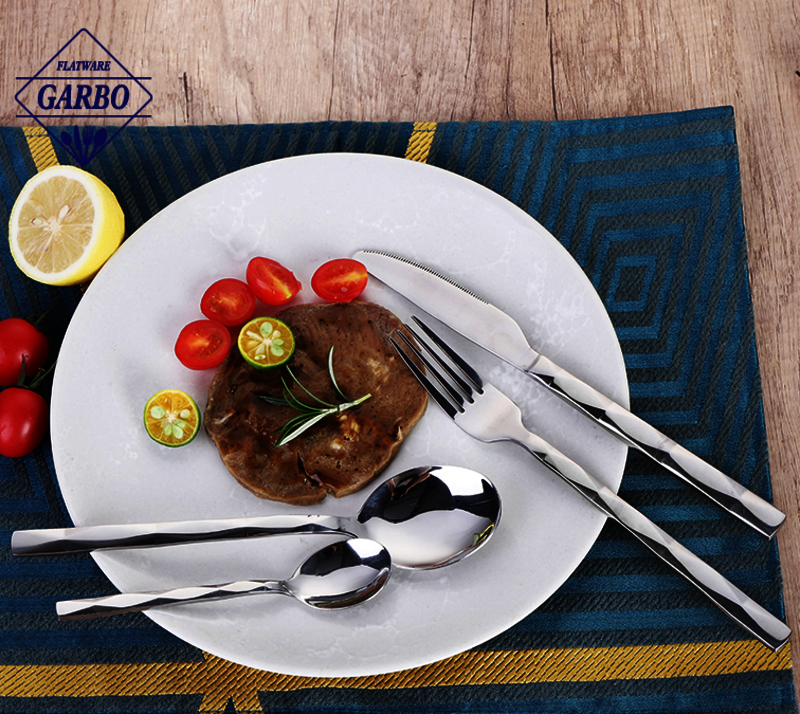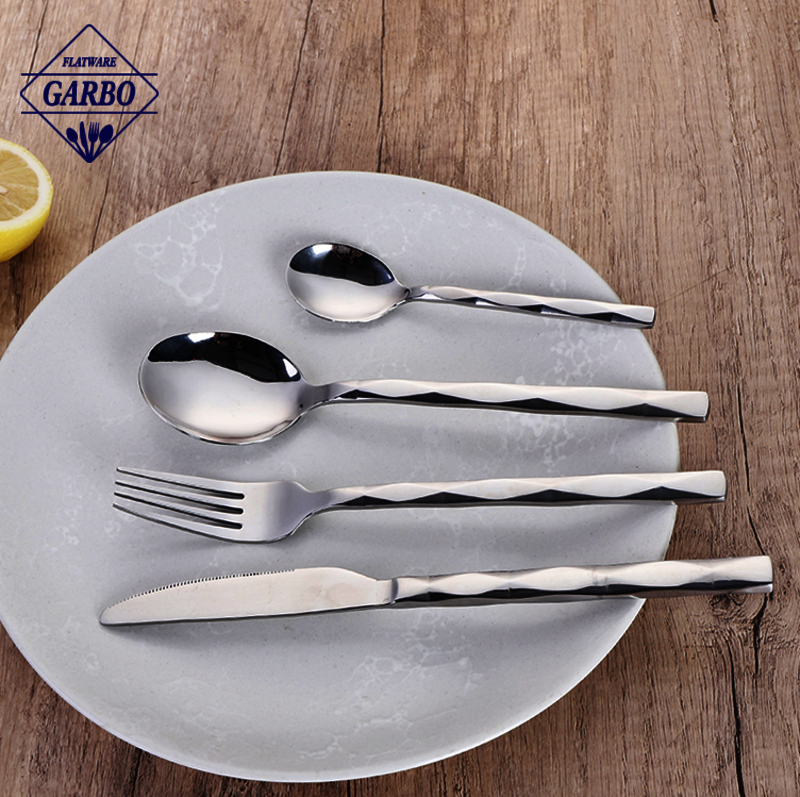Pulished on Jul. 29, 2024
The cutlery set industry is an integral part of our daily lives, providing essential tools for dining and food preparation. This article explores the complexities of a well-known cutlery set factory, delving into its manufacturing capabilities, global distribution, and international collaboration.

Located in Jieyang, Guangdong, a city renowned for its cutlery set manufacturing tradition, this cutlery set factory occupies an area of 50,000 square meters. The factory is equipped with state-of-the-art machinery and employs 1,200 skilled employees, including craftsmen, engineers, and administrative staff. This vast space allows for a streamlined production process from raw material handling to final product packaging.
The factory boasts an impressive annual shipment volume, reflecting its strong production capacity and wide-ranging demand. On average, the factory produces and ships approximately 10 million pieces of cutlery set each year. This includes a wide variety of products, from everyday stainless steel cutlery set to high-end handmade knives. The production line operates year-round, ensuring a steady supply to meet global market demand.
The factory's reach goes far beyond imagination, making it a major player in the international cutlery set market. The company has established strong partnerships with distributors and retailers in more than 50 countries. Some of the key markets include:
United States: A major importer of both everyday and premium tableware, accounting for nearly 25% of the factory’s annual shipments.
United Kingdom: With a long tradition of fine dining, the United Kingdom remains an important market, accounting for 15% of the factory’s exports.
Japan: Japan is renowned for its culinary precision and imports a large number of high-quality knives and specialty cutlery, accounting for 10% of shipments.
Australia: Australia has a growing demand for durable and stylish tableware, accounting for 8% of the factory’s exports.
Canada: Canada places an emphasis on quality and sustainability, accounting for 7% of annual shipments.
In addition to these key markets, the factory is also working with partners in emerging markets such as India, Brazil and South Africa to further expand its global footprint.
In response to growing environmental concerns, the factory has implemented several sustainable practices. These include the use of recycled materials, energy-efficient production techniques, and waste reduction programs. By adhering to strict environmental standards, the factory not only minimizes its ecological impact, but also attracts environmentally conscious consumers around the world.
The factory continuously invests in technological advancements to maintain a competitive edge. This includes the adoption of automation technology to ensure precision and consistency, as well as the integration of digital tools to better manage the supply chain. These innovations increase productivity, reduce delivery times and ensure that the highest quality standards are met.

The factory reflects the dynamic nature of the tableware industry, combining traditional craftsmanship with modern technology to produce and sell millions of pieces of tableware each year. The factory's vast area, huge annual shipments and extensive international cooperation highlight its key position in the global market. As the industry develops, the factory's commitment to innovation, sustainability and excellence ensures its continued success and relevance in the tableware sector.
Looking for Flatware Supplier?
OEM&ODM RequestRequest for Quotation?
Get Factory PriceAny Confusion?
Speak With SalesmanWe deliver the quality and value your flatware needs, on time and within budget.
Contact UsODM&OEM Service
Our flatware is certified by leading retailers including Walmart, Tesco, Costco, Lidl, Target, and METRO, ensuring the highest quality standards.
Experience seamless service from design to export with our one-stop solutions. Our team simplifying your export process and allowing you to focus on growing your business.
Choose from a range of eco-friendly and customized packaging options to suit your specific needs. Our packaging solutions are designed to protect your products while reducing environmental impact.
Our efficient supply chain ensures timely delivery of your custom cutlery, minimizing lead times and keeping your business operations running smoothly.
Comprehensive support & satisfaction guaranteed.